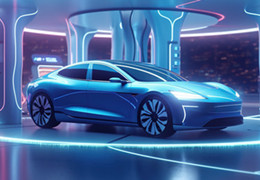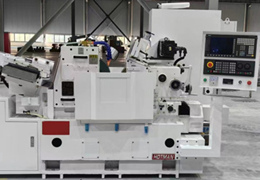A centerless grinder is a type of grinder that performs grinding without using the center of the workpiece axis. It is composed of grinding wheel, adjusting wheel and workpiece support three institutions, in which the grinding wheel actually serves as the work of grinding, adjusting wheel to control the rotation of the workpiece, and make the workpiece to occur into the knife speed, as for the workpiece bracket is to support the workpiece in the grinding, these three kinds of machine parts can have several kinds of cooperation methods, but stop grinding, except in principle, are the same.
Centerless cylindrical grinding machine can be divided into three basic structural forms according to the relative position of grinding wheel holder and bracket on the bed:
1. Fixed grinding wheel holder
Centerless Cylindrical Grinding Machine with Fixed Grinding Wheel Holder, the grinding wheel holder of this form of centerless grinding machine is fixed on the bed, and the guide wheel and pallet can be adjusted to move relative to each other, so that the guide wheel, pallet, and workpiece make feeding and compensating movements together during through-grinding or plunge-cutting grinding. The grinding wheel and the spindle of the guide wheel generally adopt the overhanging support structure. Characteristics: Simple structure, small size, generally small and medium-sized centerless grinders use this structure. For example, M1020A, MT1040A, M1050A, M10100, MG1020, MG10100, MS10100 and so on belong to this structure form.
2. Mobile type of grinding wheel holder
Centerless cylindrical grinder with moving wheel holder, the pallet of this type of centerless grinder is fixed on the bed, and the grinding wheel holder and guide wheel holder can be adjusted relative to the pallet, and the feeding movement can be done under special circumstances. Most of the grinding wheels and guide wheel spindles of this type of centerless grinder adopt double bearing structure.
Characteristics: Because the bracket is fixed on the bed, the center of the workpiece is fixed relative to the bed, so various feeding devices or automatic loading and unloading mechanisms can be attached to the machine tool. Fully automatic centerless grinders must use this type of structure. Medium-sized centerless grinding machines such as MGT1050, M11100, M11100A, M10200, MG10200A, MZT10400, M11200 and other products belong to this type of structure.
3. Inclined type
Tilting type centerless cylindrical grinding machine, this form of grinding wheel, guide wheel center line with the horizontal plane inclined α angle. The bracket is fixed on the bed, and the grinding wheel and guide wheel spindle are double support structure. The guide wheel holder can make adjustment movement relative to the pallet, and the grinding wheel holder makes feed compensation movement.
Characteristics: As the machine is tilted at an angle of α, the normal pressure of the workpiece on the surface of the guide wheel is relatively increased, thus increasing the friction between the workpiece and the surface of the guide wheel, which provides a good basis for driving the slewing of large and heavy workpieces. Such as MZT10400 machine tool is this structure form.
Centerless grinding: through grinding and plunge-cut grinding
Working principle of through-grinding and plunge-cut grinding:
Centerless grinding machines through grinding and plunge-cut grinding are both a type of metal processing, but they work on different principles.
Centerless grinding machines through grinding is a way of grinding on the surface of the workpiece by rotating the grinding wheel, the grinding process does not need to take into account the center position of the workpiece, so it is called “centerless grinding machine”. Through grinding means that the contact area between the grinding wheel and the workpiece is large, and many points of the workpiece can be processed at the same time, so the processing efficiency is high.
Plunge-cut grinding is a kind of processing method by pushing the grinding wheel into the surface of the workpiece to a certain depth for cutting, and the center position of the workpiece needs to be considered in the cutting process, so it is called “plunge-cut grinding”. Plunge cut grinding has a better processing effect and is suitable for the processing of workpiece with high surface accuracy and finish requirements.
Second, centerless grinding machine through grinding and plunge-cut grinding processing effect comparison
In terms of processing effect, centerless grinder through grinding and plunge-cut grinding have their own advantages and disadvantages.
The advantages of centerless grinder through grinding lie in high processing efficiency, good surface finish and high complexity of workpiece shape. The disadvantages of centerless grinding are that the machining accuracy is not high and the shape of the machined surface cannot be precisely controlled.
The advantages of plunge cut grinding are high machining accuracy, good surface finish and precise control of the shape of the machined surface. However, its disadvantage lies in the low processing efficiency, low complexity of the shape of the processed workpiece, and sometimes even unable to complete the required processing.
Comparison of the scope of application of centerless grinding machine through grinding and plunge-cut grinding
In terms of workpiece type and processing purpose, centerless grinder through grinding and plunge-cut grinding also have different application scenarios.
Centerless grinder through grinding is suitable for processing large, complex shape workpieces, commonly used in the processing of bushings, bearings, gears and other parts. On the other hand, plunge-cut grinding is suitable for processing parts that require high precision and high surface finish, such as cycloid wheels and gears.









